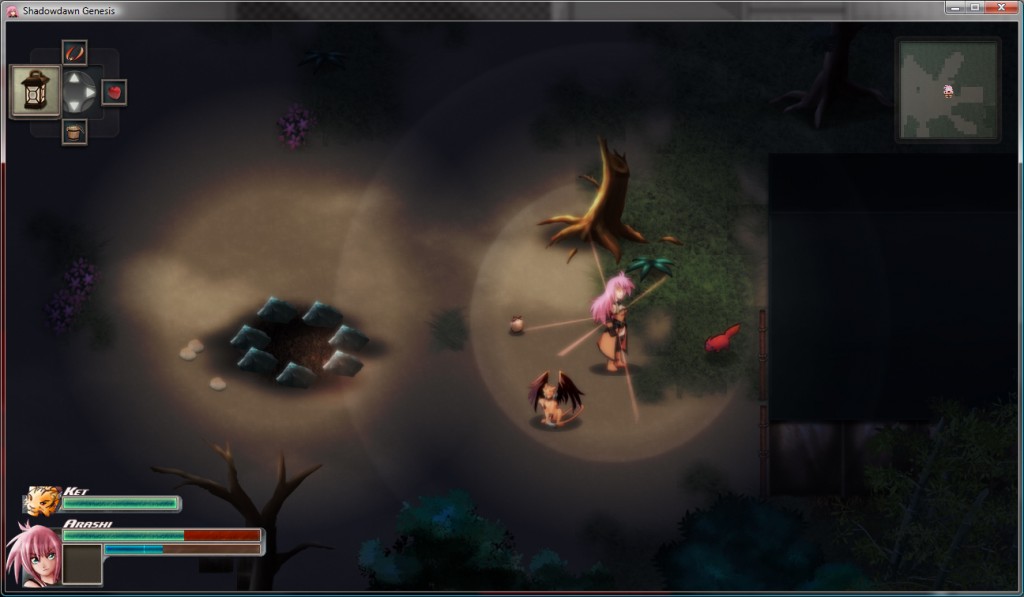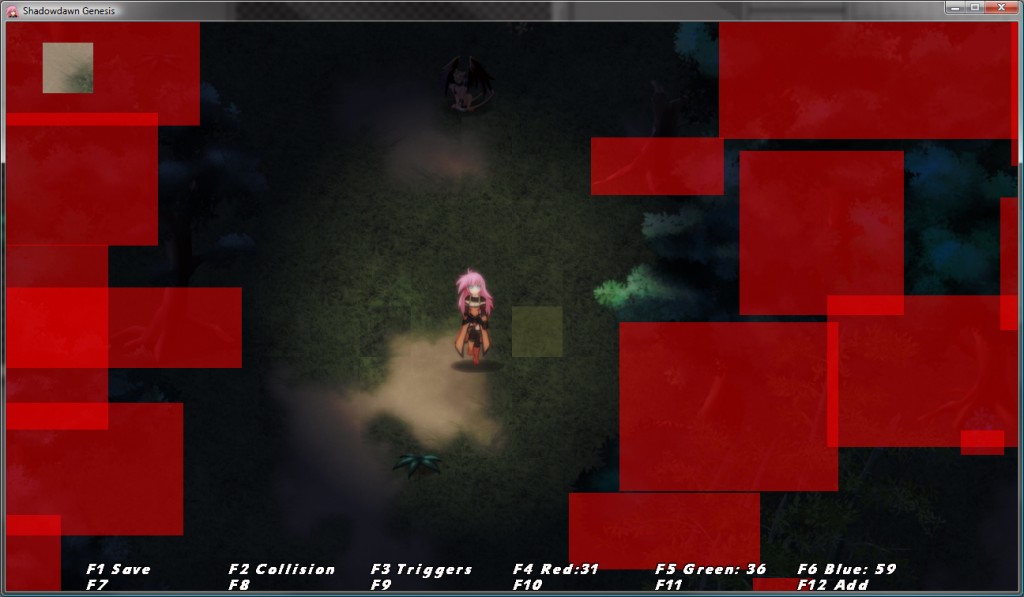
I’m constantly retooling the visuals for the game, not to mention there are plenty of incomplete animations and graphics as is, but so far I’m very proud of what I’ve pulled off. I am very thankful I have some semblance of artistic blood in my veins to go with my programming and design skills, because I don’t think this game would work as intended if I didn’t. Anyways, I am finally accumulating a lot of map graphics to make the forest and grasslands areas look, well, somewhat interesting. Combined with a fairly advanced tileset (by typical tiled game standards) and I’m extremely happy with the feel the game is going for. I realize it’s a bit of a risk to do a 2D game without a recognizable retro or isometric look in today’s market, but I’m hoping that I can overcome that. Of course… I don’t feel the game is retro in any way, but I’ll have to let you (and the other would-be players) be the judge of that in the long run. I see a lot of clamoring for a better representation of 2D games, so I’m going to do my best!
One thing I’ve been wrestling with is the fact that the first level occurs at night. First impressions are everything for games, and maybe moreso for indie games, and I am trying to find that delicate balance of making the map dark (to teach the importance of having some form of light source for truly dark areas, with a small lantern being freely available in the very first room) and having the map visible, so players can get a feel for the art style. Darker ambience lets the lighting fx really shine (no pun intended) and often has more immersion since it adds a true feeling of being alone, but lighter ambience lets the player take in more and not feel so intimidated to explore. I guess I’ll have to wait until the first Shadowdawn Genesis demo is ready and get feedback on it.

Here is a screenshot of the in-game level editor. Since (so far) I’m the only one working on the game, I decided not to make a stand-alone level editor. This has the advantage of letting me test all changes instantly and live since it’s built into the game engine. It is exclusive to the Windows version, the Xbox 360 has a compiler directive to ignore the entire editor. The red boxes here represent collisions, to give me a good idea the true paths available and where there might be any accidental holes leading to places I don’t want the player to go. Every single object has a custom collision property so I can change the virtual-3D depth of the object (letting Arashi walk behind it to the “natural” unseen backside), along with the left and right borders, all on the fly. The brighter red boxes are overlapping collisions, which might be useful to know down the road in my designs, especially if there are any unforeseen bugs with usecode triggers overlapping.
I am actually considering releasing a downloadable patch for the more advanced Windows (Steam if I’m lucky) version that lets players use this editor, because as a game player myself I know how amusing it is to play with stuff like this. But that’s all down the road, I am completely focused on finishing the game itself first :3





